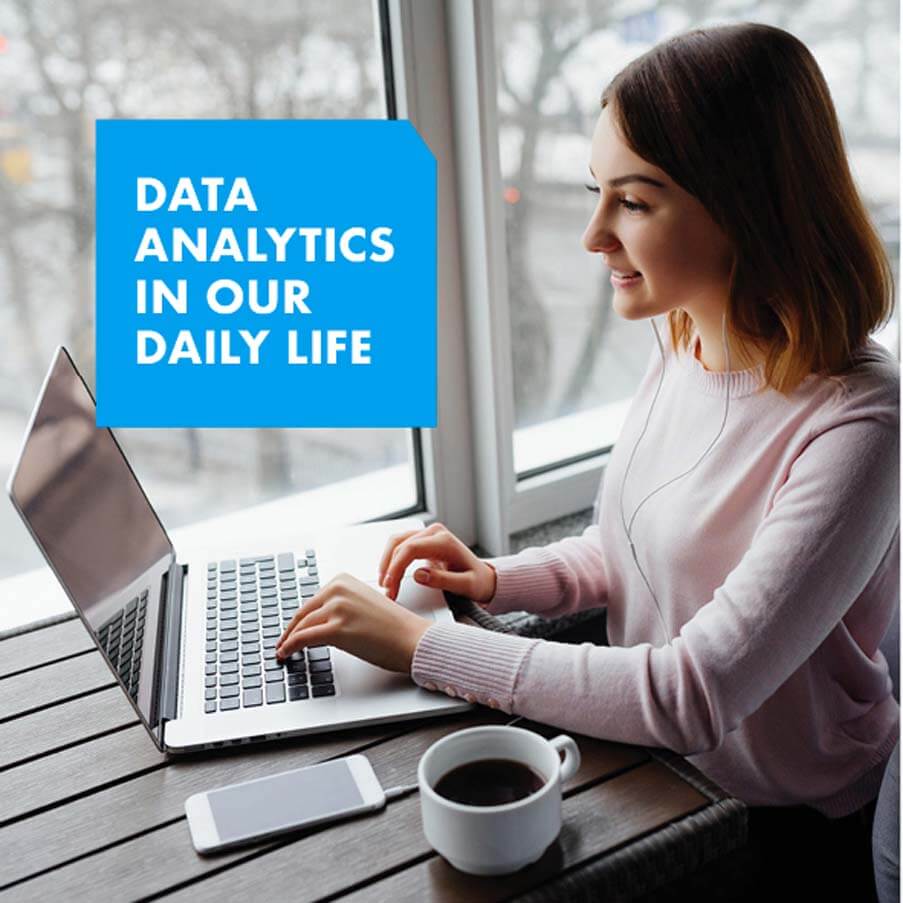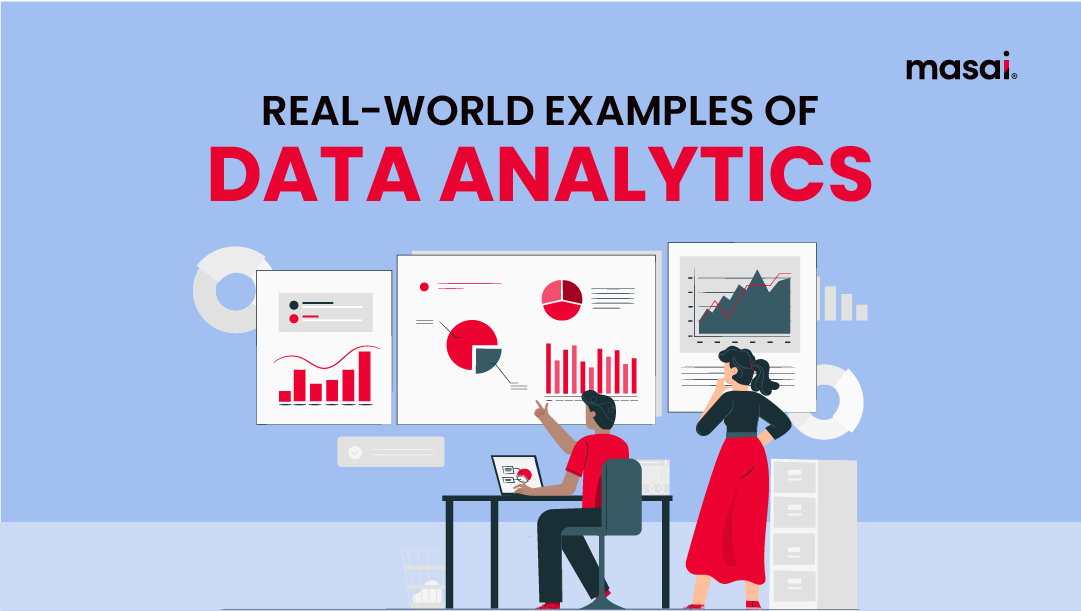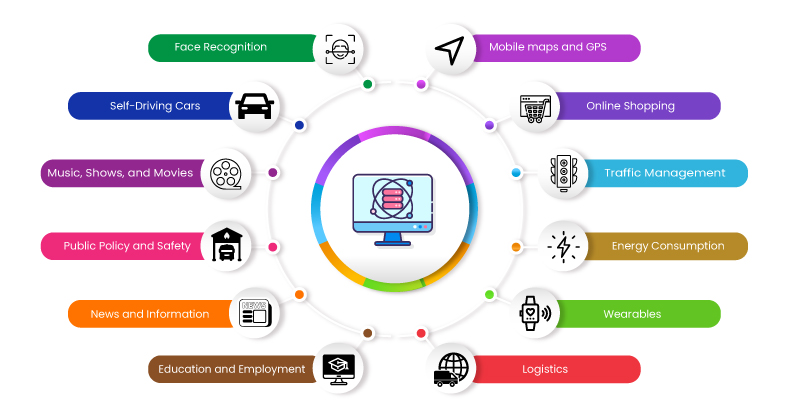To use data analytics in everyday life, collect relevant data and analyze it to make informed decisions. This helps optimize daily tasks and improve efficiency.
Data analytics isn’t just for businesses; it has practical applications in everyday life. By understanding and utilizing data, you can enhance various aspects of your daily routine. From managing personal finances to tracking fitness goals, data analytics empowers you to make better decisions.
For instance, analyzing spending patterns helps you budget more effectively. Similarly, tracking exercise data can improve your health and fitness regimen. Understanding traffic patterns can also save you time on your commute. Integrating data analytics into your daily life can lead to smarter choices and a more organized lifestyle.

Credit: sgu.ac.id
Introduction To Data Analytics
Data analytics is a powerful tool. It helps us make sense of data. We use it in various aspects of life. From personal decisions to business strategies, data analytics is everywhere. Let’s dive into what data analytics is and its importance in our daily lives.
What Is Data Analytics?
Data analytics is the process of examining data sets. It draws conclusions about the information they contain. This often involves using specialized systems and software. These tools help gather, process, and analyze data. They can find patterns, trends, and relationships in the data.
There are different types of data analytics:
- Descriptive Analytics: Summarizes past data.
- Predictive Analytics: Makes predictions about future events.
- Prescriptive Analytics: Suggests actions to achieve desired outcomes.
Importance In Daily Life
Data analytics is not just for businesses. It plays a crucial role in our everyday lives too. Here are some examples:
| Area | How Data Analytics Helps |
|---|---|
| Health | Tracks fitness progress and monitors health metrics. |
| Finance | Helps manage budgets and investments. |
| Shopping | Recommends products based on past purchases. |
| Travel | Finds best routes and travel deals. |
Data analytics can improve decision-making. It helps us understand our habits and preferences. It also helps us make better choices and predictions. By analyzing data, we can optimize our daily routines. This leads to a more efficient and fulfilling life.
Personal Finance Management
Managing personal finances can be challenging. Data analytics can make it easier. By using data, you can track and control your spending habits. This helps you save money and avoid debt.
Budget Tracking
Tracking your budget is key to financial health. Data analytics tools help you monitor your income and expenses. You can use apps to connect your bank accounts. These apps automatically update your spending and income.
Here is a simple table showing how you can track your budget:
| Category | Monthly Budget | Amount Spent |
|---|---|---|
| Food | $500 | $450 |
| Rent | $1200 | $1200 |
| Entertainment | $200 | $150 |
Keep the table updated. It helps you see where your money goes. You can adjust your spending to stay within budget.
Expense Categorization
Categorizing expenses is essential for managing finances. Data analytics tools can help. They automatically sort your spending into categories. This helps you understand your spending habits.
Here are some common expense categories:
- Food
- Rent
- Entertainment
- Utilities
- Transportation
Review these categories regularly. You can see where you spend the most money. Make changes to save more and spend less.
Using data analytics for personal finance management is powerful. It makes budgeting and expense tracking easy and effective.
Health And Fitness
Data analytics can transform your health and fitness journey. By using data, you can make informed decisions. This helps you stay healthy and fit.
Tracking Physical Activity
Tracking physical activity is essential for improving your fitness. Wearable devices like Fitbit or Apple Watch can help. They track steps, heart rate, and sleep patterns. This data is very useful.
- Steps: Knowing how many steps you take helps you stay active.
- Heart Rate: Monitoring your heart rate ensures you exercise effectively.
- Sleep Patterns: Understanding your sleep quality improves overall health.
Diet And Nutrition Analysis
Analyzing your diet and nutrition is key for maintaining good health. Apps like MyFitnessPal can track your calorie intake. These apps provide detailed insights.
| Food | Calories | Macronutrients |
|---|---|---|
| Apple | 95 | Carbs: 25g, Protein: 0.5g, Fat: 0.3g |
| Chicken Breast | 165 | Carbs: 0g, Protein: 31g, Fat: 3.6g |
Use this data to balance your diet. Ensure you get enough proteins, fats, and carbs. This keeps you healthy and energized.
Shopping And Spending
Data analytics can transform your shopping and spending habits. Using data can help you find the best deals and make smart shopping decisions.
Finding Best Deals
Data analytics helps you find the best deals. Use price comparison websites to compare prices. These websites aggregate data from multiple sources.
Check for historical price trends. Some tools show how prices have changed over time. This helps you buy at the lowest price.
Sign up for price alerts. These alerts notify you when prices drop. You can use tools like Honey or CamelCamelCamel. They track prices and send you notifications.
| Tool | Function |
|---|---|
| Honey | Tracks prices and finds coupons |
| CamelCamelCamel | Monitors Amazon prices |
Smart Shopping Decisions
Make smart shopping decisions using data analytics. Analyze your spending habits. Many banking apps offer spending analysis. They categorize your expenses and show where you spend the most.
Set a budget based on this data. Stick to your budget to avoid overspending. Use budgeting tools like Mint or YNAB. They help you track your spending in real-time.
- Mint: Links to your bank accounts and tracks spending
- YNAB: Helps you plan your budget and stick to it
Review product reviews and ratings before buying. Websites like Amazon and Yelp have user reviews. Analyze these reviews to make informed decisions.
Look for patterns in reviews. Positive reviews often highlight the best features. Negative reviews can warn you about potential issues.
Data analytics can also help you find the best time to shop. Some studies show that prices are lower on certain days of the week. Use this data to plan your purchases.
Travel And Commuting
Data analytics can make travel and commuting easier. It helps you plan your trips better. You can save time and money. Let’s explore how data analytics can help in travel and commuting.
Route Optimization
Data analytics can find the best routes for you. It uses real-time traffic data. This helps you avoid traffic jams. You reach your destination faster.
Google Maps and Waze use data analytics. They show the quickest routes. They also show alternate routes if there is traffic. This saves you time.
Public transport can also benefit. Data helps buses and trains run on time. Passengers know when to expect delays. This makes commuting smoother.
Cost-effective Travel Plans
Data analytics can help you save money on travel. It compares different travel options. This includes flights, trains, and buses. You can find the cheapest options.
Travel apps like Skyscanner use data analytics. They compare flight prices. You get the best deals.
A table can show how data helps in cost-effective travel:
| Type of Travel | How Data Helps |
|---|---|
| Flights | Compares prices from different airlines |
| Trains | Shows cheapest tickets and times |
| Buses | Finds budget-friendly options |
Data can also suggest the best times to travel. This helps you avoid peak hours. You save money on tickets. You also have a more comfortable journey.
Time Management
Time management is crucial for productivity. Data analytics can help you manage your time better. By analyzing your daily activities, you can find ways to save time.
Daily Schedule Analysis
Use data analytics to look at your daily schedule. Track how much time you spend on each task. Identify tasks that take longer than expected.
For example, you can use a simple table to track your activities:
| Task | Time Spent | Expected Time |
|---|---|---|
| Emails | 2 hours | 1 hour |
| Meetings | 3 hours | 2 hours |
| Project Work | 4 hours | 5 hours |
Analyzing this data helps you see where you can cut down time. You can then adjust your schedule to be more efficient.
Productivity Tracking
Tracking productivity is key for better time management. Use data analytics tools to monitor your work habits.
Here are some steps to track productivity:
- Set specific goals for each task.
- Use a timer to track how long each task takes.
- Record the data in a spreadsheet.
- Analyze the data at the end of the week.
Look for patterns in your work habits. Identify tasks that consistently take more time. Use this data to make improvements.
Data analytics makes it easy to see how you spend your time. By analyzing your daily schedule and tracking productivity, you can manage your time better. This will help you achieve more in less time.
Home Energy Use
Data analytics can help you understand your home energy use better. By analyzing your energy consumption, you can save money and reduce waste. This section will show you how to monitor your energy use and cut your bills.
Monitoring Consumption
Start by tracking your daily energy use. Use smart meters or energy monitors to collect data. These devices show how much energy each appliance uses.
Here is a simple table to help you track your energy use:
| Appliance | Energy Used (kWh) |
|---|---|
| Refrigerator | 1.2 |
| Air Conditioner | 3.5 |
| Washing Machine | 0.5 |
Use this data to find which appliances use the most energy. Focus on these appliances first to save energy.
Reducing Bills
Once you know your energy use, you can reduce your bills. Here are some tips:
- Unplug devices when not in use.
- Use energy-efficient appliances.
- Set your thermostat to an optimal temperature.
- Switch to LED bulbs.
By following these tips, you can lower your energy bills. Data analytics helps you see the impact of these changes over time.

Credit: www.masaischool.com
Learning And Skill Development
Data analytics can improve your learning and skill development. Use data to track progress and find areas needing improvement. This helps in becoming better at what you do.
Tracking Learning Progress
Tracking your progress is essential. Use data to see how much you have learned. Compare your current skills with your past skills.
There are many tools for tracking progress. Apps like Duolingo and Khan Academy show your learning stats. These apps use data to show how well you are doing.
You can also create simple tables to track your progress:
| Week | Topic | Score |
|---|---|---|
| 1 | Math | 80% |
| 2 | Science | 85% |
Identifying Skill Gaps
Data helps you find skill gaps. Knowing where you need improvement is important. This can guide your learning focus.
Many platforms provide analytics on skill gaps. For example, LinkedIn Learning offers insights into skills you need.
Here is an example of how to identify skill gaps:
- Review your performance data.
- Compare your scores with peers.
- Focus on areas where your scores are low.
Use data to set learning goals. This makes your learning more effective and targeted.

Credit: www.sisense.com
Conclusion
Harnessing data analytics can transform everyday decisions. From budgeting to fitness, data offers valuable insights. Embrace data-driven choices to enhance your life. Start small, track your progress, and see impactful results. With consistent use, data analytics can become a powerful tool for personal growth and efficiency.
Discover the potential of data in daily routines.

